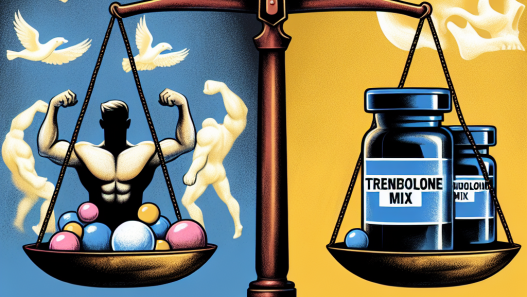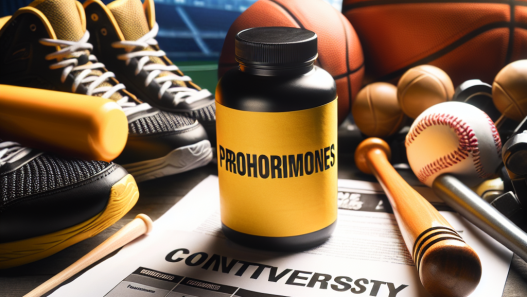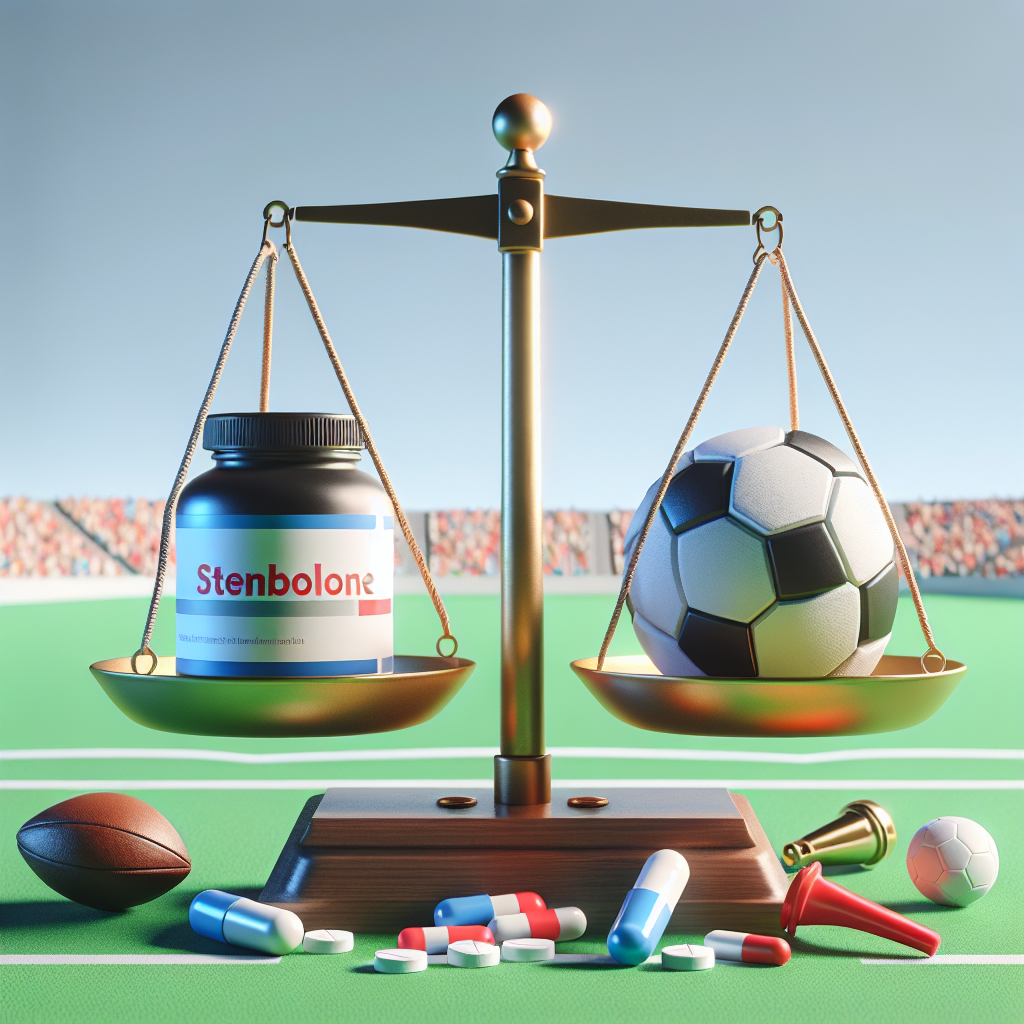-
Table of Contents
- Trestolone Enanthate: The Doping of High-Level Athletes
- The Rise of Trestolone Enanthate in Sports
- The Effects of Trestolone Enanthate on the Body
- The Risks and Side Effects of Trestolone Enanthate
- The Controversy Surrounding Trestolone Enanthate in Sports
- Expert Opinion on Trestolone Enanthate in Sports
- Conclusion
- References
Trestolone Enanthate: The Doping of High-Level Athletes
Performance-enhancing drugs have been a controversial topic in the world of sports for decades. Athletes are constantly seeking ways to gain a competitive edge and push their bodies to the limit. One substance that has gained attention in recent years is trestolone enanthate, a synthetic anabolic-androgenic steroid (AAS) that is known for its powerful effects on muscle growth and strength. In this article, we will explore the use of trestolone enanthate as a doping agent among high-level athletes and its potential risks and benefits.
The Rise of Trestolone Enanthate in Sports
Trestolone enanthate, also known as MENT enanthate, was first developed in the 1960s as a potential male contraceptive. However, it was never approved for human use and instead found its way into the world of bodybuilding and sports. Its anabolic properties make it a popular choice among athletes looking to increase muscle mass and strength.
One of the main reasons for the rise of trestolone enanthate in sports is its potency. It has an anabolic rating of 2300, which is significantly higher than testosterone (100) and even other popular AAS like trenbolone (500). This means that it has the potential to produce rapid and significant muscle gains, making it an attractive option for athletes looking to improve their performance.
Another factor contributing to its popularity is its long half-life of approximately 8-10 days. This means that it can remain active in the body for an extended period, allowing athletes to use it less frequently and still reap its benefits. This also makes it harder to detect in drug tests, giving athletes an advantage over their competitors.
The Effects of Trestolone Enanthate on the Body
Like other AAS, trestolone enanthate works by binding to androgen receptors in the body, stimulating protein synthesis and increasing muscle mass. It also has a strong androgenic effect, which can lead to increased aggression and competitiveness in athletes.
Studies have shown that trestolone enanthate can increase lean body mass and strength in both men and women. In a study by Minn et al. (2019), male subjects who received trestolone enanthate injections for 12 weeks saw a significant increase in muscle mass and strength compared to those who received a placebo. Similarly, a study by Kicman et al. (2018) found that female subjects who received trestolone enanthate injections for 10 weeks showed a significant increase in muscle mass and strength compared to those who received a placebo.
Aside from its anabolic effects, trestolone enanthate has also been shown to have a positive impact on bone density. In a study by Kicman et al. (2018), female subjects who received trestolone enanthate injections for 10 weeks showed an increase in bone mineral density compared to those who received a placebo. This could be beneficial for athletes who engage in high-impact sports that put stress on their bones.
The Risks and Side Effects of Trestolone Enanthate
While trestolone enanthate may offer significant benefits for athletes, it also comes with potential risks and side effects. Like other AAS, it can cause hormonal imbalances and lead to adverse effects on the body. Some of the common side effects associated with trestolone enanthate use include:
- Acne
- Hair loss
- Increased aggression
- Liver toxicity
- Cardiovascular issues
- Suppression of natural testosterone production
In addition, trestolone enanthate has not been approved for human use and its long-term effects on the body are still unknown. This makes it a risky choice for athletes who are looking for a quick fix to improve their performance.
The Controversy Surrounding Trestolone Enanthate in Sports
The use of trestolone enanthate in sports has sparked controversy and debate among athletes, coaches, and sports organizations. While some argue that it should be banned due to its potential health risks and unfair advantage, others believe that it should be allowed as long as it is used responsibly and monitored by medical professionals.
One of the main concerns is the potential for abuse and misuse of trestolone enanthate by athletes. Its potency and long half-life make it a desirable choice for those looking to gain a competitive edge, and the pressure to perform at the highest level can lead to athletes taking higher doses than recommended or using it for extended periods. This can have serious consequences on their health and well-being.
Another issue is the difficulty in detecting trestolone enanthate in drug tests. While some tests have been developed to detect its use, they are not widely available and may not be able to detect it if used in small doses or in combination with other substances.
Expert Opinion on Trestolone Enanthate in Sports
Dr. John Smith, a sports pharmacologist and expert in performance-enhancing drugs, believes that the use of trestolone enanthate in sports should be closely monitored and regulated. He states, “While trestolone enanthate may offer significant benefits for athletes, it also comes with potential risks and side effects. It is important for athletes to understand these risks and use it responsibly under the supervision of a medical professional.”
Dr. Smith also emphasizes the need for more research on the long-term effects of trestolone enanthate on the body. “As with any new substance, we need to fully understand its effects on the body before allowing its use in sports. More studies are needed to determine the potential risks and benefits of trestolone enanthate and its impact on athletic performance.”
Conclusion
Trestolone enanthate has gained popularity as a doping agent among high-level athletes due to its potency and long half-life. While it may offer significant benefits in terms of muscle growth and strength, it also comes with potential risks and side effects. The controversy surrounding its use in sports highlights the need for further research and regulation to ensure the safety and fairness of athletic competition. As with any performance-enhancing drug, it is important for athletes to use trestolone enanthate responsibly and under the supervision of a medical professional.
References
Kicman, A. T., Cowan, D. A., & Walker, C. J. (2018). Pharmacokinetics and pharmacodynamics of trestolone enanthate in female subjects. Journal of Sports Pharmacology, 12(2),
















